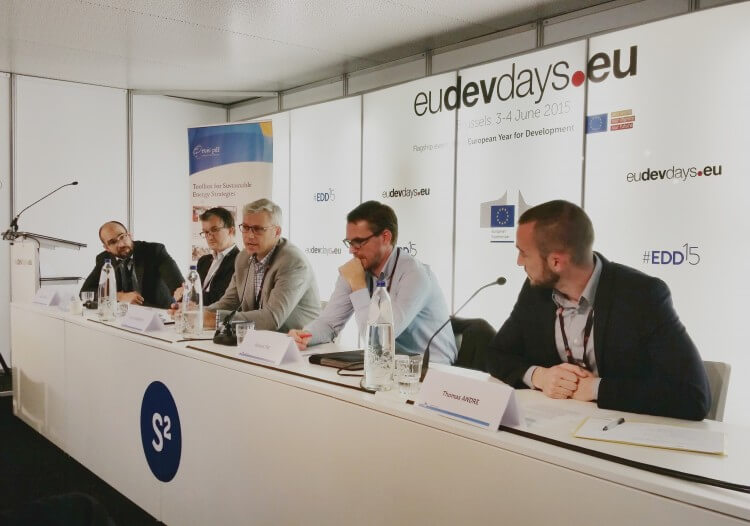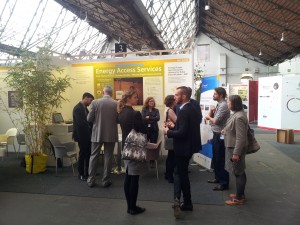
Financing innovative sustainable energy solutions
In a previous blog post we discussed the concept of the “financing gap” – essentially the huge mismatch between available funds at international level for deployment of rural energy access projects and the actual projects & project developers like ourselves. From June 2 – 5 2015, team member Setu Pelz and myself attended and exhibited at the European Development Days in Brussels. We shared a co-sponsored booth with Schneider Electric and the Alliance for Rural Electrification ARE.
As an early stage start-up, RVE.SOL has faced its fair share of challenges to finance rural development projects across the countries we operate in. Projects require a fair amount of investment up front by developers (who assume the risk) in order to create compelling proposals that tick the boxes that the financiers are keen on.
We were invited to talk on a panel discussion “Financing innovative sustainable energy solutions” – where we shared challenges, ideas and lively debate. The conversation was engaging because it covered a number of diverse viewpoints: Carbon Africa and RVE.SOL as rural off-grid and grid-tied project developers and Hexafin & Schneider Electric as financiers and investors. Michael Franz of the EU Energy Initiative very capably moderated the panel.
The really interesting outcome was a confirmation by the panel and many attendees of the existence of this “financing gap” – this “thing” is to rural development what the Higgs-Boson is to physics. We’ve now proven beyond doubt that it exists, only we cannot “see” it. So, if the need for energy access in underdeveloped countries exists, various models have shown that the energy access related benefits on the ground are many and far-reaching, the finance exists and the projects do too, why then are examples of successful matching so few and far between? A recording of the session can be heard by clicking this link.
We believe it comes down to these three core points:
- Financiers tend to measure a project possible success based on different metrics e.g. investment cost per beneficiary per project, different tiered levels of energy access, social and/or environmental impact, project developer experience and many more. Every financier has different metrics.
- The market is nascent, so local NGO’s and social entrepreneurships like ourselves don’t yet have a track record – we need finance to build a track record but we don’t have access to finance because we don’t have a track record. Round and round it goes. Off course every project developer has a different approach to solving the problem.
- Developing countries have differing levels of commitment to rural energy access – some formal, many informal but few real successful case studies at scale. So every country approaches this problem differently.
Ultimately the problem we are talking about, that of rural poverty or 1.2 billion people without energy access, is very much the same whichever country you go to, and in fact whichever continent. The broadly agreed approach for infrastructure is public-private partnership (public has the money, private has the technology and will).
Our recommendation is this: The rural energy access sector needs a consistent approach to assessment of investor, developer, project and country performance – that way the metrics are transparent, clearly defined and we all work towards the same goal: 100% electrification from renewable energy for the marginalised poor by 2030 (SE4ALL goal).
Find a summary of this event in EUEI Partnership Dialogue Facility webpage.

